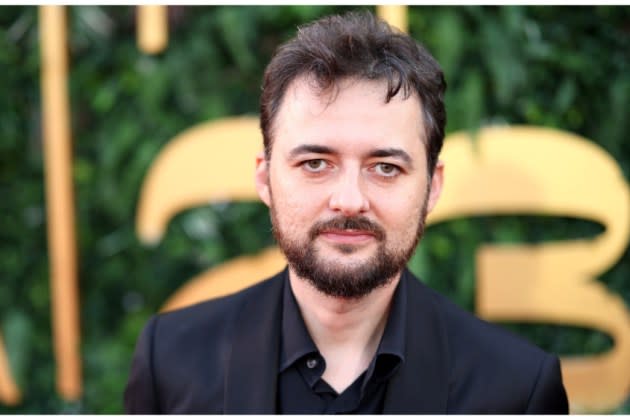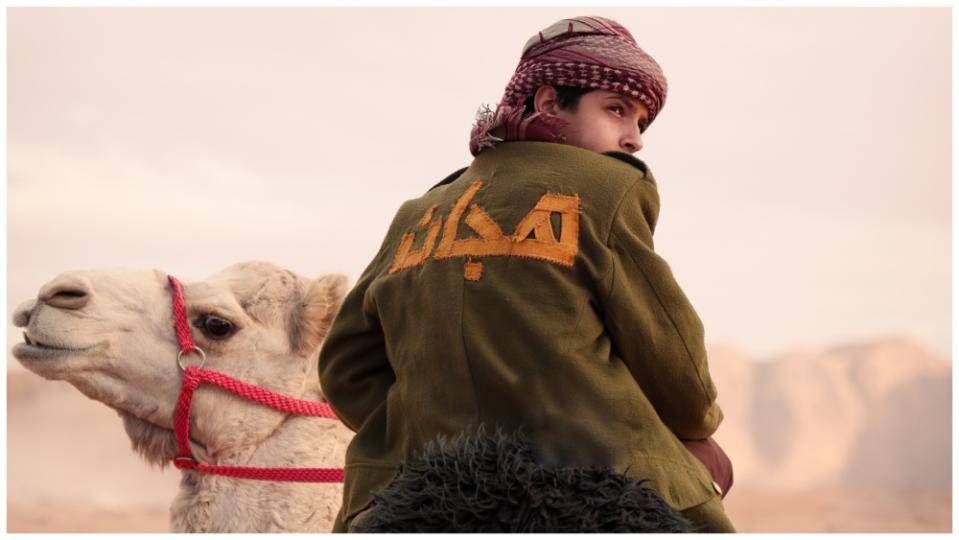‘Yomeddine’ Director Abu Bakr Shawky on His Camel Racing Epic ‘Hajjan’: ‘We’re Trying to Make a Desert Story From Our Perspective’

Egyptian-Austrian director Abu Bakr Shawky, who in 2018 made a splash when his first feature “Yomeddine” had the rare distinction of making the competition cut for Cannes, is back on the festival circuit with Saudi-set adventure movie “Hajjan.”
Shawky’s big-budget epic follow-up, which launched from Toronto’s Discovery section, is now premiering regionally at Saudi Arabia’s Red Sea Film Festival in Jeddah, where it screened Monday to roaring applause as an out-of-competition gala.
More from Variety
Front Row Takes MENA Distribution for Saudi Drama 'Norah' in Competition at Red Sea Fest (EXCLUSIVE)
Saudi Arabian Filmmakers Form Trade Association to Hold Sway in Booming Sector Regulations
Somewhat similarly to “Yomeddine” – which involved the desert voyage of a leper, a donkey and a child – “Hajjan” also involves a journey across the desert. This time, it’s embarked upon by a young orphan boy and his beloved camel. The beautifully shot film — produced by the King Abdulaziz Center for World Culture, known as Ithra, and Egypt’s Mohamed Hefzy via his Film Clinic shingle — was made mostly in the sprawling area situated along Saudi’s Red Sea coast in Tabuk, in the northwest of the kingdom. “Hajjan” is about a young boy named Matar who, after the death of his brother on the camel race track, tries to avenge his death. To do so, he becomes a camel jockey, only to find himself entangled in a battle for his own freedom.
Variety spoke to the director about working on a bigger canvas with his sophomore film.
You’ve gone from making a movie involving a leper, a boy and a donkey to making one about a boy and his camel. How did that happen?
Well, as it goes with independent filmmakers, you wait and you wait and you wait for funding for a film that may or may not happen. And then I got a call – while we’re trying to put together a film that I’ve been trying to make for several years – from Mohamed Hefzy. He tells me they are working on a film about a boy and his camel. And I said [to myself], “OK, a Saudi film about a boy and his camel.” And then I asked, “What’s the story?” And he’s like, “Well, we don’t have a story yet. But it’s going to be about camel racing.” That’s where I started paying attention, because camel racing is a sport that is very popular here, but nobody really knows about it abroad. And I also feel it’s a very cinematic sport. You have the great horse-racing movies, sure. But you can make a great camel racing movie and people will be like, “I didn’t even know they raced camels.” So that was when I started paying attention. I thought, “That really could be something.”
Another similarity with “Yomeddine” is the desert voyage.
Yes, and I feel that most of the desert epics are usually made by Westerners and don’t really involve a lot of the Arab voices. So when Hefzy told me, “This is something that you could make, and you can have some freedom [as to how to go about it],” I told him: “OK, I want to make it an action adventure about camels.” And he said, “OK.” Then I said, “I want to make it a Western, with the elements of the classical Western. And, again he said, “OK.” So basically, I gave him all the opportunities to say no, and he [always] said yes. So I was like, “Yeah, this sounds like a really good fit.” And I was interested in the world. It’s like with “Yomeddine” — there what caught me was the world of the leper colony. And with this, I was interested in the world of camel racing.

Talk to me about the visual aspect of the film.
We shot most of it between Neom and Tabouk, which is in the northwest of Saudi Arabia, and some parts of it in Jordan in Wadi Rum, which is a natural extension of that area. They basically look the same. Wadi Rum has been used many years by Hollywood studios for anything that is desert related. And Neom and Tabouk are still starting up, but they are getting there. The DP, who is Gerry Vasbenter (“Waiting for Anya”), did such an amazing job in capturing that landscape. He’s such a detailed DP and he really designed the look based on all of our discussions and our references. What we were trying to do is really go beyond the desert epic. We’re trying to make a desert story from our perspective. When you sit with the Bedouins and listen to their campfire stories, there is an element of fantastical stories that they tell you about a camel that races faster than the wind, and a boy who puts on a jacket and becomes a superhero. There is always that legendary aspect in Arabic storytelling because it’s oral storytelling, it’s not written down. So these oral traditions, they become legends. This is not a realistic film. It has all these elements of folklore, of magical realism at some points, and we wanted to convey that.
There’s also another story strand in this film, which is about subverting the patriarchy.
Well, it’s a new world. It’s a very fast-moving world. Things are changing fast, and I think it was time to show that on-screen. We weren’t really interested in showing a fully male-dominated world. We wanted to show that there could be an aspect of this world in which women can also dominate. I think an aspect of the Arab world that’s not often talked about is that it’s the women who tell the stories and carry on the traditions of the family. And it’s the women who raise the family; not just the children, but the family. And that’s very often overlooked and misrepresented. It’s the women who tell the stories and who drive everything forward. And that’s a really big part of our culture, not just in Egypt but also in Saudi. It’s part of our culture, and it needed to be conveyed.
This interview has been edited and condensed for clarity.
Best of Variety
Sign up for Variety’s Newsletter. For the latest news, follow us on Facebook, Twitter, and Instagram.

 Yahoo News
Yahoo News 
